Recently though, I have decided to add in an element of performance analysis and start gathering some data when going back through my weekend game film for my U14 & U15 competitive girls teams.

This Post Contains:
Packing Points! What are THOSE?
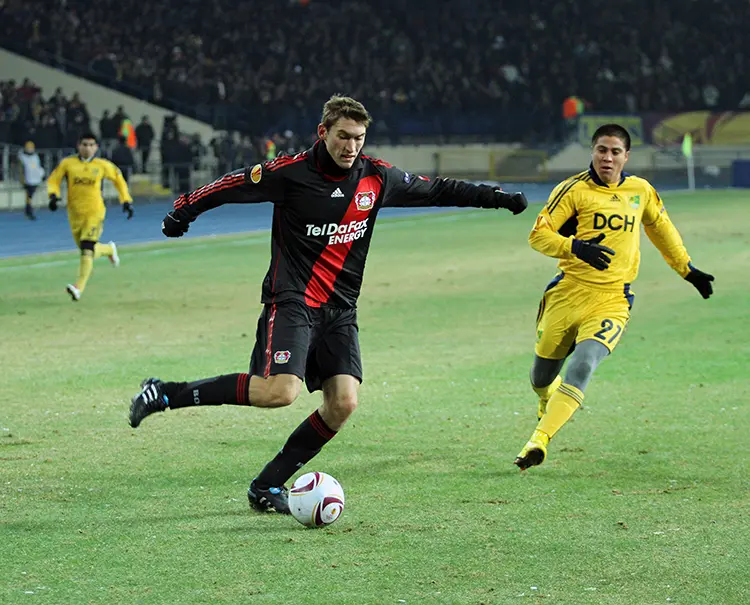
One of the great things about packing points is that, unlike many of the statistics that we see used over-and-over in the game today, players can use packing points to gage how effective they are at moving the ball FORWARD in matches and compare their performance week to week, game to game.
Commonly used soccer stats lack in many ways
- GOALS, ASSISTS & SHOTS ON GOAL – counting these gives us no information about how the play was built (with the exception of the assist, that gives us a little info) and who was involved in the build up. If we want to know what happened to create the shot opportunity, we are outta luck as nothing about run of play is revealed here.
- POSSESSION % – knowing who had the most possession tells us nothing concrete about the outcome of the game. It also reveals no information about how, where and when attacking plays happened. It is actually quite normal to lose the soccer game, but to have had the majority of the possession. How? Well, for example, teams that win games by counterattacking and converting at a high rate might actually have low possession percentages. Their goals come from playing vertically and attacking immediately instead of a slow build through the thirds (which is common with teams playing a possession-based style of play).
- COMPLETED PASSES – individual completed pass data also lacks in what it provides, as a player could have a 100% completed pass ratio by just dropping passes back to their keeper over and over again (there’s nothing inherently wrong with this as a strategy, the numbers just don’t reveal ‘effectiveness’ at progressing towards the goal).
Because of this forward progression element of packing points, comparing two teams packing numbers is a much better indicator of who won the game than comparing possession percentage or completed pass ratios.
How to count packing points in soccer
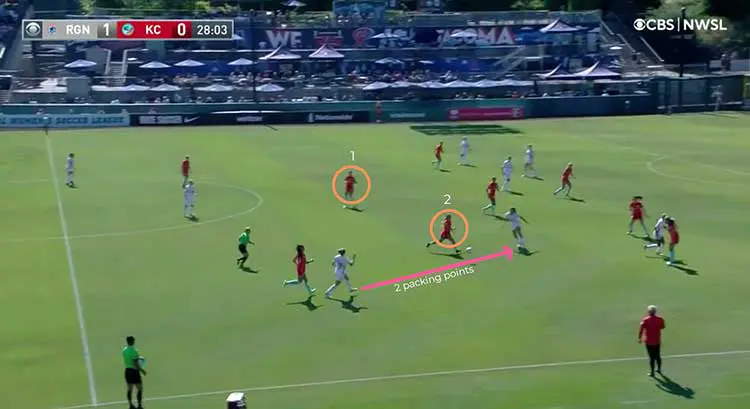
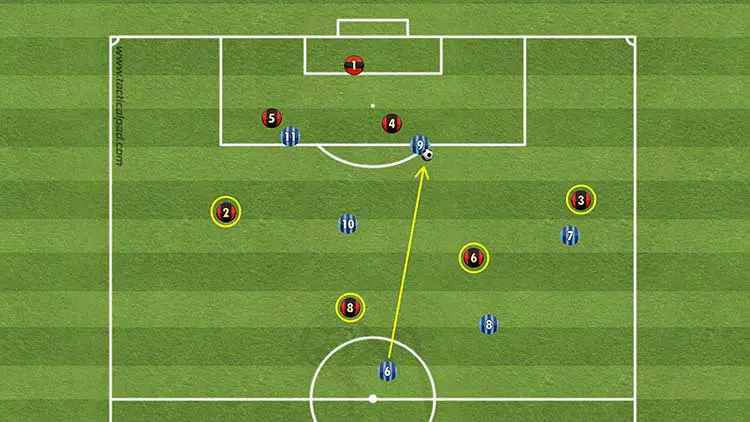
When you take a shot on goal, you receive packing points for the final ball ONLY IF YOU SCORE (points are given essentially the same way as for a completed pass, and it is only counted as completed if it goes into the back of net). Here’s a great explanation of packing points from a 2018 New York Times article:
"The methodology behind packing is fairly easy to understand. Essentially, players earn a point for any move — a cross, a dribble, a long pass — that causes the ball to move past opposition players. If a move begins with five opponents between the ball and the goal, and ends with two, that’s three points. The receiver of the pass is awarded points as well."
Victor Mather, The New York Times
Packing points for youth development
I have also found that counting packing points for my girls competitive teams has been the very best use of my time as a coach (as opposed to any other type of video analysis) as it not only gives under-appreciated positions recognition for their contributions, but it helps really break down a team’s style-of-play (where you are strong? where do you lack?) and use that information to build better training sessions.
Everyone is included
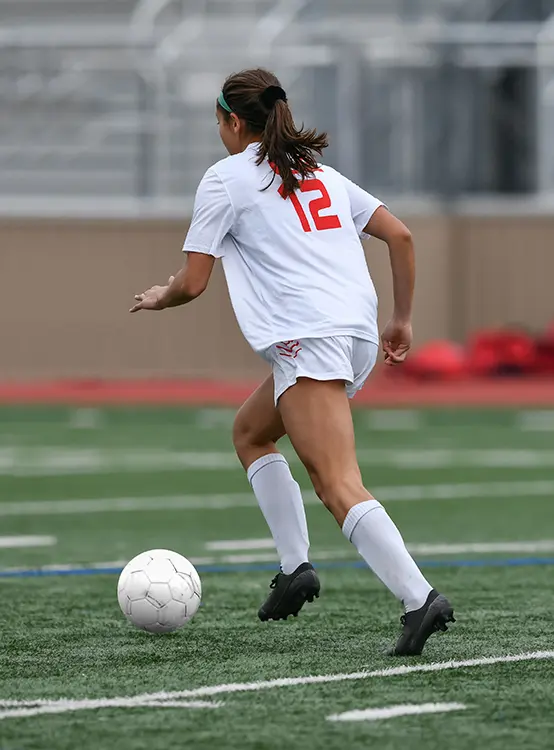
Packing points challenge everyone on the field and help create a team culture where ALL lines are actively engaged with the attack. Every single player and every single position (defense, midfielders and forwards) have the potential to shine within this system, even the goalkeeper.
Using the concept of packing points with youth players can help them get over their skewed perception of the lack of importance of the defensive line. It can help build confidence and worthiness in players as they start to see how effective they can be in contributing to the collective attacking efforts.
Positions that average the most packing points
Can you guess which positions typically tend to get the most packing points in soccer? Deeper players that are good distributors tend to have the highest packing point scores.
In youth soccer that typically ends up being the center defensive midfielder or a center back. Higher players (strikers, center attacking mids) that are good at movement off the ball can also put up good numbers – as long as their first touch is solid and they are able to retain the ball.

Proactive players that find holes and create space will get onto the end of the vertical passes more often than players who expect the ball to come to them. It takes two (both the deeper player and the higher player) working together to connect the pass and progress forward and pack in opponents.
Growing your game with packing points
{Related read: Become a better soccer player by BEING INVESTED}
If you are a soccer coach, you can absolutely use packing points, video analysis and the accompanying concepts with younger players in small-sided games 7v7 or 9v9 (and I would definitely recommend it if your players can cognitively handle it), but most of what I am talking about here is geared towards players aged 12 and up and in a competitive program.
Healthy competition
In a healthy competitive environment, you are HAPPY when your teammates do better than you. Why? Because you know you will have to work extra hard to keep up with them – thereby growing your game and leveling up as a player.

Using packing points in soccer can help players learn SO MUCH about themselves. too. Not just about the technical aspects of their game (am I actually completing passes?) but also about their mindset (how am I reacting when others outperform me? am I taking responsibility for my development and working on what I need to be working on?).
Packing points and goal setting
Players might THINK they are really good at certain things, but realize via packing points analysis that they actually aren’t where they thought they were. Watching yourself on film and having these realizations can be very difficult to do. In order to benefit from it you need self-awareness, growth-mindedness and mental toughness.
{Related read: The 3 KEY pieces to building mental toughness in soccer}
When, each week, you you are working to outperform your own best performance by spending time fine-tuning the small details that will help get you there, you’re constantly progressing toward your goals and keeping them in the forefront of your mind.
Grow your confidence through preparedness.
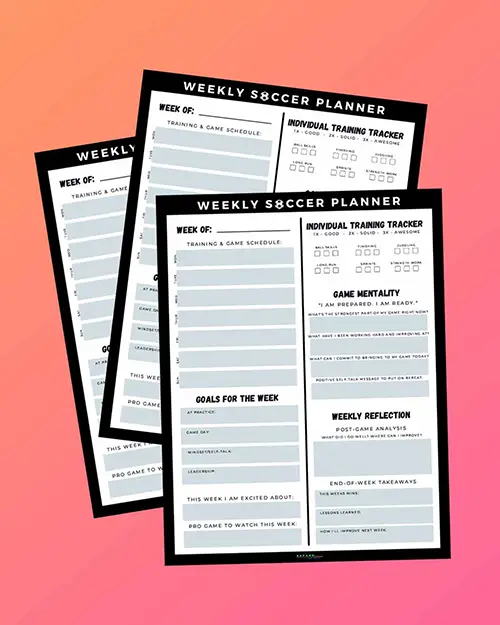
Subscribe to our email list to
Get your FREE Weekly Soccer Planner!
We respect your privacy. Unsubscribe anytime.
How to best use packing points as a coach
Using packing points in training
Packing points are very versatile and can be used for team’s play a variety of styles of soccer. Whether you are a team that likes to play in the wide channels, combine through the middle or hit deep-to-wide diagonal balls to the wingers, packing points work. Why? Because packing points is about POSSESSION WITH PROGRESSION and in order to score goals, every team needs to advance up the field and get closer to that net.
Concepts like ‘speed-of-play’ are also easy to teach through the lens of packing points. Through packing points, players can see that eliminating multiple opponents with a single, well-placed pass (with a high packing score) allows your team to advance up the field much faster than beating players one by one.
Bringing packing points to your team
Hopefully you now have a solid understanding of packing points, how to count them and maybe you even feel inspired to try them with your youth soccer teams!

If you need one more selling point, know that packing points help create accountability and build great goal setting skills as your players WILL WANT TO WORK hard to outperform their last best performance. Seeing actual, tangible numbers that gage their effectiveness game to game could be just the thing some of your players need to push themselves to that next level.
Equipment & tips for counting packing points in soccer
Excited to try counting packing points ? Here are a few pieces of advice I have for any player, parent or coach who decides they want to dive in:
- You need video that is filmed from an elevated angle. You need to be able to see the opponent’s lines and the space in-between players in order to accurately count packing points. My current club uses Veo, but when I don’t have access to that camera I use by DJI Osmo Pocket 2 on a lightstand and have a team parent operate the camera and track the game action via the app. Very easy to use and provides great 4K video with a low-cost camera option.
- You need video filmed at a wide angle. You need to be able to see the entire width of field so that a pass doesn’t go off frame (it’s very hard to accurately count when you can’t see where the pass went).
- You need film that is NOT zooming in and out. If possible, have your videographer film at one focal length (zoomed out, as wide as possible) and then just pan with the action.
- When counting the packing points, list WHO passed, WHO received, HOW MANY opposing players were bypassed and the TIME STAMP. (see my example below)
- Make notes of the highest yield passes (for example, one pass that resulted in 6 points is pretty high for youth games). Also make notes of the longest chains (for example, 3 passes in a row that each bypassed 3 players would be a chain of 9 total packing points). This is helpful information to have and teaches you a lot about how a team connects and works together.

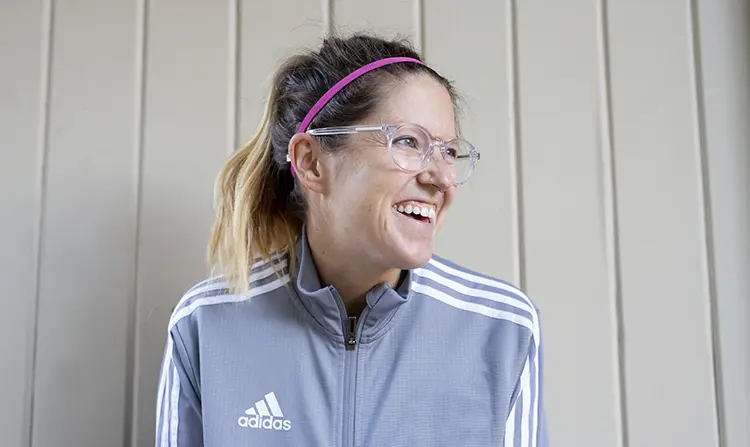
Hi everyone! I’m Jenn and I create content to help female soccer players and coaches maximize individual and team potential by developing healthy mindset skills. Join other subscribers and sign up for the newsletter for all my best tips and advice!
We respect your privacy. Unsubscribe anytime.









THANK YOU – I was researching a bit on Packing score, and your article was exactly what I needed 🙂
My son is year 2010 / Under 13s, and I operate the Veo cam for the Team and try to do a bit of basic stats like passing, tackles, shots on target, dribbles, etc., and now I will be doing packing scores as well 🙂
You are so welcome! I’m glad this was helpful. You are right, there are not a lot of resources online that really explain packing very well, one of the reasons I wanted to write this. I love packing points and find so much value in them because they give ALL players something to work toward and a way to gauge their impact-fullness on the field. Once your team gets a hang of it too, its so much fun for them to challenge themselves and push themselves to get a higher score each week!